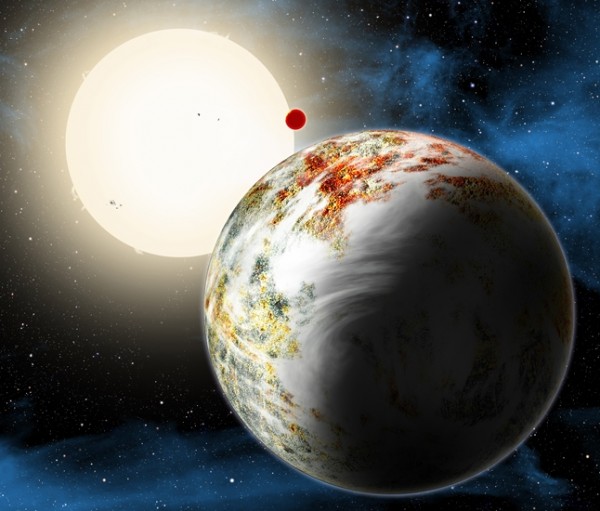Mega-Earth: Kepler Space Telescope Finds Planet 17 Times The Size Of Earth
| Lemuel Cacho | | Jun 03, 2014 04:43 PM EDT |
(Photo : io9.com) Mega-Earth.
Astronomers have recently discovered a world 17 times the size of Earth and call it a 'Mega-Earth."
In the past, scientists have discovered many 'Super-Earths,' vast planets that are larger in size and mass than the Earth, but the latest discovery, astronomers say, is a league of its own.
Like Us on Facebook
The Mega-Earth was discovered by NASA's Kepler space telescope and was announced at an astronomy meeting in Boston last Monday.
Astronomers officially named the newly discovered planet Kepler-10c and its size changed how massive rocky planets are formed without turning into a Jupiter-like planet, which is predominantly gaseous.
Astrophysicists and space theorists did not see the discovery coming. The traditional scientific view is that planets ten times bigger than the earth in terms of mass and size would generally accommodate more gas.
Kepler-10c defies the notion that bigger planets like Jupiter and Saturn are home to more hydrogen. Instead, the Mega-Earth is evidence that giant planets can also stay rocky with its surfaces defined rather than gaseous and bloated.
According to the discovery, Kepler-10c is a very old planet and was estimated to have been formed 11 billion years ago. Astronomers find the age of the giant planet interesting because it was formed less than 3 billion after the universe began. At the time, many in the scientific community believed that rocky worlds have not existed yet.
Astronomers said that the planet is not likely host to life because it is too close to its parent star. The Kepler space telescope showed that the giant planet's surface is thoroughly roasted.
Also, the giant planet's gravitational pull is nearly three times of what we have on Earth which makes it impossible for living creatures to move around. Kepler-10c, the discovery showed, is much denser down to its core.
"It's still rock, but it's rock that's twice as dense as the rock we're used to," said Dimitar Sasselov, Harvard University professor of astronomy and a co-author of the paper describing the Mega-Earth.
TagsKepler space telescope, Kepler-10c, Mega-Earth, Astronomy
©2015 Chinatopix All rights reserved. Do not reproduce without permission
EDITOR'S PICKS
-

Did the Trump administration just announce plans for a trade war with ‘hostile’ China and Russia?
-

US Senate passes Taiwan travel bill slammed by China
-

As Yan Sihong’s family grieves, here are other Chinese students who went missing abroad. Some have never been found
-

Beijing blasts Western critics who ‘smear China’ with the term sharp power
-

China Envoy Seeks to Defuse Tensions With U.S. as a Trade War Brews
-

Singapore's Deputy PM Provides Bitcoin Vote of Confidence Amid China's Blanket Bans
-

China warns investors over risks in overseas virtual currency trading
-

Chinese government most trustworthy: survey
-

Kashima Antlers On Course For Back-To-Back Titles
MOST POPULAR
LATEST NEWS
Zhou Yongkang: China's Former Security Chief Sentenced to Life in Prison

China's former Chief of the Ministry of Public Security, Zhou Yongkang, has been given a life sentence after he was found guilty of abusing his office, bribery and deliberately ... Full Article
TRENDING STORY

China Pork Prices Expected to Stabilize As The Supplies Recover

Elephone P9000 Smartphone is now on Sale on Amazon India

There's a Big Chance Cliffhangers Won't Still Be Resolved When Grey's Anatomy Season 13 Returns

Supreme Court Ruled on Samsung vs Apple Dispute for Patent Infringement

Microsoft Surface Pro 5 Rumors and Release Date: What is the Latest?










